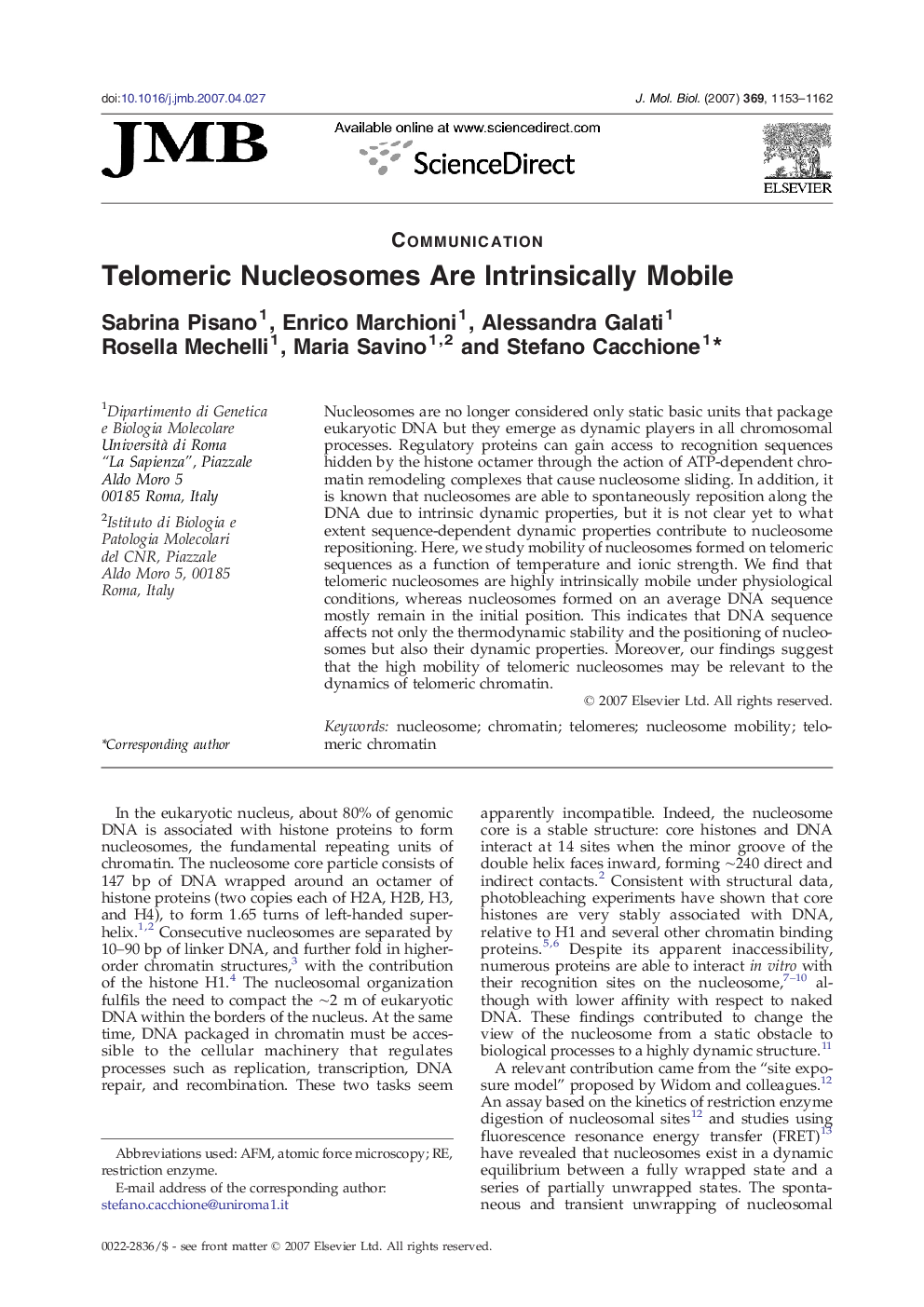| Article ID | Journal | Published Year | Pages | File Type |
|---|---|---|---|---|
| 2188357 | Journal of Molecular Biology | 2007 | 10 Pages |
Nucleosomes are no longer considered only static basic units that package eukaryotic DNA but they emerge as dynamic players in all chromosomal processes. Regulatory proteins can gain access to recognition sequences hidden by the histone octamer through the action of ATP-dependent chromatin remodeling complexes that cause nucleosome sliding. In addition, it is known that nucleosomes are able to spontaneously reposition along the DNA due to intrinsic dynamic properties, but it is not clear yet to what extent sequence-dependent dynamic properties contribute to nucleosome repositioning. Here, we study mobility of nucleosomes formed on telomeric sequences as a function of temperature and ionic strength. We find that telomeric nucleosomes are highly intrinsically mobile under physiological conditions, whereas nucleosomes formed on an average DNA sequence mostly remain in the initial position. This indicates that DNA sequence affects not only the thermodynamic stability and the positioning of nucleosomes but also their dynamic properties. Moreover, our findings suggest that the high mobility of telomeric nucleosomes may be relevant to the dynamics of telomeric chromatin.
